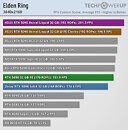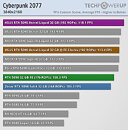
Chinese Firms Equip GeForce RTX 5090D with Blower-Type Coolers for AI Workstations
Chinese hardware enthusiasts and AI researchers are rolling out custom versions of NVIDIA's latest flagship GPU, the GeForce RTX 5090D "Blackwell" variant for China. Originally intended as a special model that complies with US export regulations, the RTX 5090D is proving to be an excellent choice for smaller AI labs. Building on the trend set by specialist firms modifying the RTX 3090 and RTX 4090, these teams have taken the GB202 chip and mounted it on new PCBs with blower‑style coolers better suited to AI server racks than gaming rigs. Instead of large fans and complex heatsinks, each card uses a dual‑slot blower design that pushes hot air straight out the back of the chassis.
The power connector has also been moved to the rear bracket, making it easier to stack cards in clusters without cables getting in the way. Each unit still packs 32 GB of GDDR7 memory and a PCIe 5.0 x16 interface, although the maximum power draw remains unconfirmed. While previous "D" series cards topped out around 450 W, with Blackwell, this figure might approach 575 W, similar to the regular RTX 5090. This blower cooler could be undersized for a near‑600 W TDP, but with undervolting and underclocking, it may operate with stability over long workloads. Given that Chinese AI labs are struggling to acquire enough GPU capacity, some smaller labs and university researchers are possibly far away from getting enough compute resources for their work. So, repackaging these GPUs into workstation bodies is the only choice to get some acceleration in the hands of the masses.
The power connector has also been moved to the rear bracket, making it easier to stack cards in clusters without cables getting in the way. Each unit still packs 32 GB of GDDR7 memory and a PCIe 5.0 x16 interface, although the maximum power draw remains unconfirmed. While previous "D" series cards topped out around 450 W, with Blackwell, this figure might approach 575 W, similar to the regular RTX 5090. This blower cooler could be undersized for a near‑600 W TDP, but with undervolting and underclocking, it may operate with stability over long workloads. Given that Chinese AI labs are struggling to acquire enough GPU capacity, some smaller labs and university researchers are possibly far away from getting enough compute resources for their work. So, repackaging these GPUs into workstation bodies is the only choice to get some acceleration in the hands of the masses.






































































